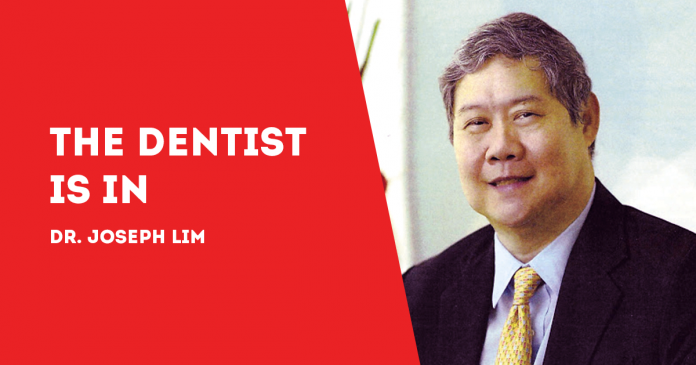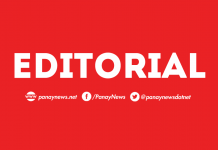
(By Dr. Joseph D. Lim and Dr. Kenneth Lester Lim, BS-MMG, DDM, MSc-OI)
IT IS SAD to know that toothpaste is too expensive for low-income Filipinos.
Today, it takes a bit more than a day’s wages for the average Filipino to be able to buy a tube of toothpaste. In comparison, it takes less than half a day’s wages to do so in Thailand.
To be exact, it takes 1.1778 days of work (or 1.2 when rounded up) to buy the cheapest of the top three best-selling fluoride toothpaste in the Philippines. The price per gram is 0.028 based on purchasing power parity in 2011 US dollars.
In comparison, it takes about half a day’s wages – or 0.5885 of a day – for a Thai to afford a fluoride toothpaste; in Singapore, it’s 0.1205. In the United States, it’s 0.129 days while in Japan it’s 0.0582. Meaning, toothpaste is cheaper in these countries than in the Philippines.
The figures come from a study published in PLOS One. The study was conducted by Athanasios Gkekas of the Department of Health Sciences, University of York, United Kingdom, and colleagues at the World Health Organization’s (WHO) Oral Health Program, the London School of Hygiene and Tropical Medicine, the College of Dentistry at New York University, and the Department of Dentistry, Radboud University Medical Center, The Netherlands.
The study is now part of the WHO Global Oral Health Report.
The United Nations health agency uses the lowest-paid unskilled government worker’s daily wage as the threshold for the affordability of a medical product used for the treatment of an acute condition. If more than one day of work is required to buy a medical product, it becomes unaffordable.
Cost is a barrier to universal compliance with the recommendation of brushing teeth twice daily with a fluoride toothpaste, says Gkekas, the study’s lead author.
Gkekas and his co-researchers developed the Fluoride Toothpaste Affordability Ratio (FTAR) to assess the cost of fluoride toothpaste and its affordability.
Assuming 182.5 grams is the recommended annual consumption of fluoride toothpaste, it is unaffordable when the FTAR is greater than 1.
The study assumed the poorest individuals to prefer the cheapest available fluoride toothpaste in terms of price per gram.
Since consumer purchasing decisions are influenced by availability, marketing and individual preferences, the study used the Euromonitor database for information on three brands with the largest market shares in 52 countries, 40 of which were included in the study.
The study targeted the cheapest available product at a common point of purchase. Data collection took place between June 2019 and September 2019.
The “daily wage of the lowest-paid unskilled government worker” was then computed.
The sampled countries showed that the average lowest-paid unskilled government worker needed more than one day of work to purchase 182.5 g of the cheapest of the top-three selling fluoride toothpaste.
Twenty-two countries indicated unaffordable expenditures on purchasing the annual recommended amount of the cheapest, top-three bestselling fluoride toothpaste.
In high-income countries, the lowest-paid unskilled government worker needed only 0.18 working days to purchase 182.5 g of the cheapest fluoride toothpaste.
The study found that fluoride toothpaste is “strongly affordable” in high-income countries, relatively affordable in upper middle-income countries, and strongly unaffordable in lower middle-income and low-income countries.
***
Dr. Joseph D. Lim, Ed. D., is the former Associate Dean of the College of Dentistry, University of the East; former Dean, College of Dentistry, National University; Past President and Honorary Fellow of the Asian Oral Implant Academy; Honorary Fellow of the Japan College of Oral Implantologists; Honorary Life Member of the Thai Association of Dental Implantology; and Founding Chairman of the Philippine College of Oral Implantologists. For questions on dental health, e-mail jdlim2008@gmail.com or text 0917-8591515.
***
Dr. Kenneth Lester Lim, BS-MMG, DDM, MSc-OI, graduated Doctor of Dental Medicine, University of the Philippines, College of Dentistry, Manila, 2011; Bachelor of Science in Marketing Management, De la Salle University, Manila, 2002; and Master of Science (MSc.) in Oral Implantology, Goethe University, Frankfurt, Germany, 2019. He is an Associate Professor; Fellow, International Congress of Oral Implantologists; Member, American Academy of Implant Dentistry and Fellow, Philippine College of Oral Implantologists. For questions on dental health, e-mail limdentalcenter@gmail.com./PN







